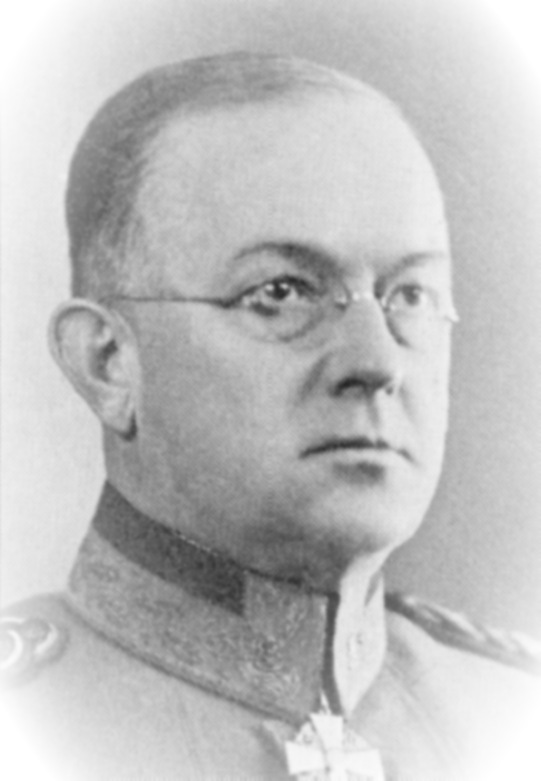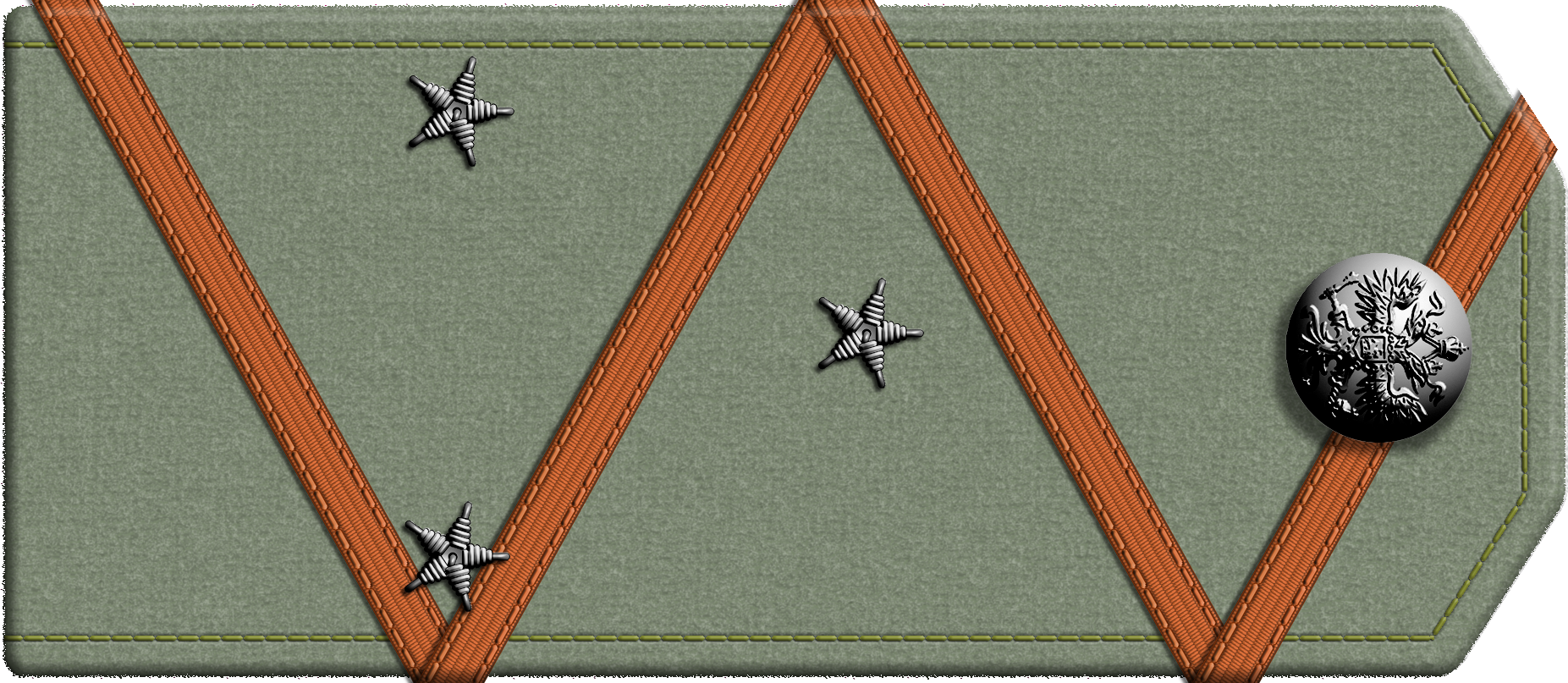|
Juho Heiskanen
Juho Henrik Heiskanen (18 December 1889 Pielisensuu – 11 December 1950) was a Finnish major general during World War II. Biography Heiskanen joined the Jaeger Movement in 1915 and trained and fought in the Royal Prussian 27th Jäger Battalion. In 1916, he was arrested by Gendarmerie in Jyväskylä and sent to Petrograd. Heiskanen was released next year during the October Revolution, and he returned to Finland. During the Finnish Civil War, Heiskanen fought for the Whites. Heiskanen commanded the IV Corps during first days of the Winter War. Heiskanen was removed from the office by C.G.E. Mannerheim due to failures. During the Continuation War The Continuation War, also known as the Second Soviet–Finnish War, was a conflict fought by Finland and Nazi Germany against the Soviet Union during World War II. It began with a Finnish declaration of war on 25 June 1941 and ended on 19 ..., Heiskanen was the Commandant of Viipuri, and the General Inspector of the Milita ... [...More Info...] [...Related Items...] OR: [Wikipedia] [Google] [Baidu] |
Finnish IV Corps (Winter War)
The IV Corps was a formation of the Finnish Army during the Winter War against the Soviet Union. It defended the area north of Lake Ladoga against Soviet attacks. It was commanded by Major General Juho Heiskanen and from 4 December 1939 by Major General Woldemar Hägglund. The IV Corps defeated superior Soviet troops by using motti tactics. Order of battle IV Corps * 12th Division (''12.D'') led by Lauri Tiainen * 13th Division (''13.D'') led by Hannu Hannuksela * Separate Battalion 8 (''Er.P.8'') * Separate Battalion 9 (''Er.P.9'') * Separate Bicycle Company 4 (''Er.PPK 4'') Group Talvela Also attached to the corps was Group Talvela commanded by Commander Paavo Talvela. Group Talvela covered the IV Corps northern flank up to the forces of the North Karelian Group. Group Talvela defeated a Soviet Division in the Battle of Tolvajärvi, one of the first Finnish victories of the war. Group Talvelas order of battle: * Infantry Regiment 16 (''JR 16'') * One battalion of the ... [...More Info...] [...Related Items...] OR: [Wikipedia] [Google] [Baidu] |
Finnish Major Generals
Finnish may refer to: * Something or someone from, or related to Finland * Culture of Finland * Finnish people or Finns, the primary ethnic group in Finland * Finnish language, the national language of the Finnish people * Finnish cuisine See also * Finish (other) * Finland (other) * Suomi (other) Suomi means ''Finland'' in Finnish. Suomi may also refer to: *Finnish language Finnish (endonym: or ) is a Finnic languages, Finnic language of the Uralic languages, Uralic language family, spoken by the majority of the population in Finla ... * {{disambiguation Language and nationality disambiguation pages ... [...More Info...] [...Related Items...] OR: [Wikipedia] [Google] [Baidu] |
People From Kuopio Province (Grand Duchy Of Finland)
The term "the people" refers to the public or common mass of people of a polity. As such it is a concept of human rights law, international law as well as constitutional law, particularly used for claims of popular sovereignty. In contrast, a people is any plurality of persons considered as a whole. Used in politics and law, the term "a people" refers to the collective or community of an ethnic group or nation. Concepts Legal Chapter One, Article One of the Charter of the United Nations states that "peoples" have the right to self-determination. Though the mere status as peoples and the right to self-determination, as for example in the case of Indigenous peoples (''peoples'', as in all groups of indigenous people, not merely all indigenous persons as in ''indigenous people''), does not automatically provide for independent sovereignty and therefore secession. Indeed, judge Ivor Jennings identified the inherent problems in the right of "peoples" to self-determination, as i ... [...More Info...] [...Related Items...] OR: [Wikipedia] [Google] [Baidu] |
1950 Deaths
Events January * January 1 – The International Police Association (IPA) – the largest police organization in the world – is formed. * January 5 – 1950 Sverdlovsk plane crash, Sverdlovsk plane crash: ''Aeroflot'' Lisunov Li-2 crashes in a snowstorm. All 19 aboard are killed, including almost the entire national ice hockey team (VVS Moscow) of the Soviet Air Force – 11 players, as well as a team doctor and a masseur. * January 6 – The UK recognizes the People's Republic of China; the Republic of China severs diplomatic relations with Britain in response. * January 7 – A fire in the St Elizabeth's Ward of Mercy Hospital in Davenport, Iowa, United States, kills 41 patients. * January 9 – The Israeli government recognizes the People's Republic of China. * January 12 – Submarine collides with Sweden, Swedish oil tanker ''Divina'' in the Thames Estuary and sinks; 64 die. * January 13 – Finland forms diplomatic relations with the People's Republic of Chin ... [...More Info...] [...Related Items...] OR: [Wikipedia] [Google] [Baidu] |
1889 Births
Events January * January 1 ** The total solar eclipse of January 1, 1889 is seen over parts of California and Nevada. ** Paiute spiritual leader Wovoka experiences a vision, leading to the start of the Ghost Dance movement in the Dakotas. * January 4 – An Act to Regulate Appointments in the Marine Hospital Service of the United States is signed by President Grover Cleveland. It establishes a Commissioned Corps of officers, as a predecessor to the modern-day U.S. Public Health Service Commissioned Corps. * January 8 – Herman Hollerith receives a patent for his electric tabulating machine in the United States. * January 15 – The Coca-Cola Company is originally incorporated as the Pemberton Medicine Company in Atlanta, Georgia. * January 22 – Columbia Phonograph is formed in Washington, D.C. * January 30 – Mayerling incident: Rudolf, Crown Prince of Austria, and his mistress Baroness Mary Vetsera commit a double suicide (or a murder-suicide) at the Mayerling hun ... [...More Info...] [...Related Items...] OR: [Wikipedia] [Google] [Baidu] |
Continuation War
The Continuation War, also known as the Second Soviet–Finnish War, was a conflict fought by Finland and Nazi Germany against the Soviet Union during World War II. It began with a Finnish declaration of war on 25 June 1941 and ended on 19 September 1944 with the Moscow Armistice. The Soviet Union and Finland had previously fought the Winter War from 1939 to 1940, which ended with the Soviet failure to conquer Finland and the Moscow Peace Treaty. Numerous reasons have been proposed for the Finnish decision to invade, with regaining territory lost during the Winter War regarded as the most common. Other justifications for the conflict include Finnish President Risto Ryti's vision of a Greater Finland and Commander-in-Chief Carl Gustaf Emil Mannerheim's desire to annex East Karelia. The following paragraph contains a bundle of cites for the Finnish participation in the siege of Leningrad, which is a commonly debated complex issue in the article (see talk).--> On 22 June 1941 ... [...More Info...] [...Related Items...] OR: [Wikipedia] [Google] [Baidu] |
Carl Gustaf Emil Mannerheim
Baron Carl Gustaf Emil Mannerheim (, 4 June 1867 – 27 January 1951) was a Finnish military commander, aristocrat, and statesman. He served as the military leader of the White Guard (Finland), Whites in the Finnish Civil War (1918), as List of regents#Finland, Regent of Finland (1918–1919), as Chief of Defence (Finland), commander-in-chief of the Finnish Defence Forces during Finland in World War II, World War II (1939–1945), and as the sixth president of Finland (1944–1946). He became Finland's only Field marshal (Finland), field marshal in 1933 and was appointed honorary Marshal of Finland in 1942. Born into a Swedish-speaking population of Finland, Swedish-speaking family in the Grand Duchy of Finland, Mannerheim made a career in the Imperial Russian Army, serving in the Russo-Japanese War and the Eastern Front (World War I), Eastern Front of World War I and rising by 1917 to the rank of lieutenant general. He had a prominent place in the Coronation of Nicholas II and ... [...More Info...] [...Related Items...] OR: [Wikipedia] [Google] [Baidu] |
Winter War
The Winter War was a war between the Soviet Union and Finland. It began with a Soviet invasion of Finland on 30 November 1939, three months after the outbreak of World War II, and ended three and a half months later with the Moscow Peace Treaty on 13 March 1940. Despite superior military strength, especially in tanks and aircraft, the Soviet Union suffered severe losses and initially made little headway. The League of Nations deemed the attack illegal and expelled the Soviet Union from its organization. The Soviets made several demands, including that Finland cede substantial border territories in exchange for land elsewhere, claiming security reasonsprimarily the protection of Leningrad, from the Finnish border. When Finland refused, the Soviets invaded. Most sources conclude that the Soviet Union had intended to conquer all of Finland, and cite the establishment of the Finnish Democratic Republic, puppet Finnish Communist government and the Molotov–Ribbentrop Pact' ... [...More Info...] [...Related Items...] OR: [Wikipedia] [Google] [Baidu] |
White Guard (Finland)
The White Guard, officially known as the Civil Guard (, ; ; ), was a voluntary militia, part of the Finnish Whites movement, that emerged victorious over the socialist Red Guards in the Finnish Civil War of 1918. They were generally known as the "White Guard" in the West due to their opposition to the "communist" Red Guards. In the White Army of Finland many participants were recruits, draftees and German-trained Jägers – rather than part of the paramilitary. The central organization was named the White Guard Organization, and the organization consisted of local chapters in municipalities. The Russian Revolution of 1905 led to social and political unrest and a breakdown of security in Finland, which was then a Grand Duchy under the rule of the Russian Tsar. Citizen militias formed as a response, but soon these would be transformed along political (left-right) lines. The Russian Revolution of 1917 and the subsequent independence of Finland (declared in December 1917) a ... [...More Info...] [...Related Items...] OR: [Wikipedia] [Google] [Baidu] |






